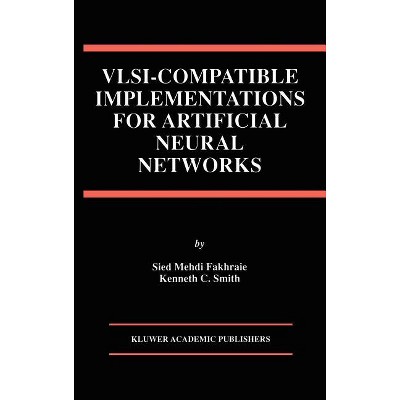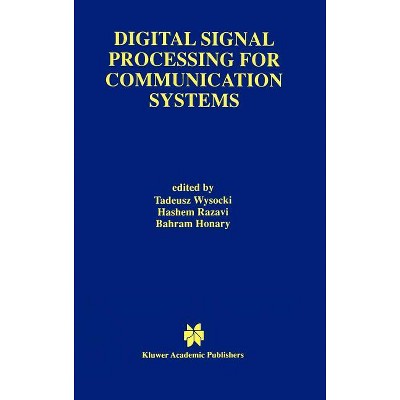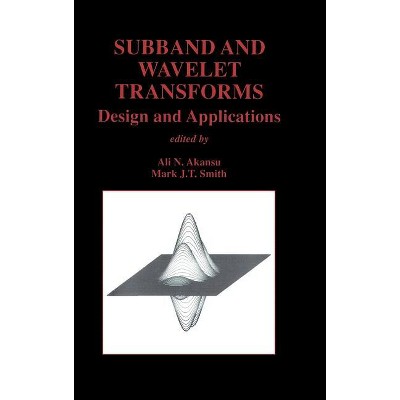Sponsored

Third Generation Wireless Information Networks - (The Springer International Engineering and Computer Science) by David J Goodman & Sanjiv Nanda
$169.99
In Stock
Eligible for registries and wish lists
Sponsored
About this item
Highlights
- Rutgers University launched WINLAB in 1989, just as the communications industry, the Federal government, and the financial community in the United States, were waking up to the growing public appetite for wireless communications and to the shortage of technology to feed it.
- Author(s): David J Goodman & Sanjiv Nanda
- 317 Pages
- Technology, Telecommunications
- Series Name: The Springer International Engineering and Computer Science
Description
Book Synopsis
Rutgers University launched WINLAB in 1989, just as the communications industry, the Federal government, and the financial community in the United States, were waking up to the growing public appetite for wireless communications and to the shortage of technology to feed it. The secret was already out in Europe, where no fewer than three new cordless and cellular systems were progressing from drawing board to laboratory to factory to consumers. In July 1989, the FCC held a well-attended tutorial that turned into a debate over whether second generation British or Swedish technology held the key to mass-market personal communications. Many in the audience wondered whether United States technology was out of the picture. Technology uncertainties are more acute in wireless communications than in any other information service. For example multi-gigabit optical fiber communications have followed an orderly progression from basic science leading to technology, which in turn stimulated standards, and then commercial products. Eventually applications will be found and industry and society at large will reap the benefits. By contrast, the applications of wireless communications are apparent to an eager public. A large market exists but is held in check by a shortage of capacity. The demand has led the cellular industry to formulate standards for advanced systems before the technology is in place to implement them. Everyone holds their breath waiting to observe performance of the first products. Gaps in basic science add to the uncertainty and forestall the resolution of technological debates.Dimensions (Overall): 9.36 Inches (H) x 6.64 Inches (W) x .85 Inches (D)
Weight: 1.25 Pounds
Suggested Age: 22 Years and Up
Number of Pages: 317
Genre: Technology
Sub-Genre: Telecommunications
Series Title: The Springer International Engineering and Computer Science
Publisher: Springer
Format: Hardcover
Author: David J Goodman & Sanjiv Nanda
Language: English
Street Date: December 31, 1991
TCIN: 1006472785
UPC: 9780792392187
Item Number (DPCI): 247-15-1783
Origin: Made in the USA or Imported
If the item details aren’t accurate or complete, we want to know about it.
Shipping details
Estimated ship dimensions: 0.85 inches length x 6.64 inches width x 9.36 inches height
Estimated ship weight: 1.25 pounds
We regret that this item cannot be shipped to PO Boxes.
This item cannot be shipped to the following locations: American Samoa (see also separate entry under AS), Guam (see also separate entry under GU), Northern Mariana Islands, Puerto Rico (see also separate entry under PR), United States Minor Outlying Islands, Virgin Islands, U.S., APO/FPO
Return details
This item can be returned to any Target store or Target.com.
This item must be returned within 90 days of the date it was purchased in store, shipped, delivered by a Shipt shopper, or made ready for pickup.
See the return policy for complete information.
Frequently bought together

$8.49
MSRP $14.99
Buy 2, get 1 free select books, music & movies
2 out of 5 stars with 1 ratings
Trending Computers & Technology Books

$9.82
MSRP $10.99
Buy 2, get 1 free select books, music & movies
4.3 out of 5 stars with 3 ratings

$18.34
Buy 2, get 1 free select books, music & movies
5 out of 5 stars with 2 ratings

$7.99
Buy 2, get 1 free select books, music & movies
5 out of 5 stars with 1 ratings













